In February 2020, we had the opportunity to do our first maternity session for Hilary, a friend pregnant with her first child, with mutual friend Nathan cast in the role of a bartering goblin. The session kicked off the first in the Distant Era Protagonist narrative series we had long desired to do. We had never shot a series quite like it and asked Hilary and Nathan if they wouldn’t mind sharing some perspective on how the concept came together.
What was the initial idea behind this session?
Hilary: I had seen some of Steve’s photos on Facebook, and I thought it would be fun to figure out a concept that would work within the style that Steve likes to do. Nathan had recently purchased a goblin mask that I thought would be a fun element to include, so all the pieces sort of fell together.
What made you want to do a maternity session with this concept?
Hilary: It feels like the maternity session aspect just sort of happened. Nathan and I had wanted to follow the story of a woman and a goblin before I became pregnant, and the timing just ended up being such that it became a maternity photoshoot. It was actually a fun process of story discovery as all the elements came together.
There is a certain fairy tale quality to this idea. Were you inspired by any other sources or fairy tales (Rumpelstiltskin, for instance)?
Hilary: I was definitely inspired by the story of Rumpelstiltskin, as well as some of the other changeling story tropes. We intentionally wanted it to feel a lot like a fairytale, with the setup, the appearance, and the arc of the story.
What’s going on in the story? Can you describe it? Why do you think the mother gives up her baby? Why does she reconsider?
Hilary: The story starts with a pregnant woman looking at an empty cup, the feeling of dread and poverty hanging on her shoulders. There’s an implication that her husband is no longer in her life, the reason left vague. Suddenly a lantern lights and a goblin appears, perhaps summoned by the light, bearing a contract that promises riches. Rashly, the widow signs the contract, eager for the wealth the goblin promises, even at the cost of her child. However, in a moment of clarity, she reconsiders and decides her child is not worth the price. In the end, she tears up the contract, rejecting the goblin’s offer.
What’s the goblin’s story? Does he broker deals for babies regularly? What does he do with them once he gets them?
Nathan: Ghüs the Goblin is a character I’ve created, but there’s been a couple of versions of him. Sometimes he’s a helpful—albeit mischievous—creature, and other times he’s been a villain that seeks ill intent and cares only for himself. This version of Ghüs is a creature that seeks an unfortunate parent in order to trade their baby in exchange for some small fortune. I imagine he’s looking for a protege. There’s folklore of babies secretly exchanged for a block of wood. The child is then raised by fairies in such ways. I would imagine this is a version of that belief.
Hilary, did this idea have any context or subtext with your hopes, thoughts, and fears of having your first child?
Hilary: When we were initially crafting this, I was thinking more about the visual elements that would feature—a contract, a goblin, a pregnant woman—that I didn’t think much about the beats of the story until much later. Like all fairy tales though, I think it reflects truths about the world and human nature. I know for me being a first-time mom, there’s a lot of pressure to be the perfect parent, perhaps both for appearances and also to not bring too much harm to your new child, so to get to explore a parent that willfully makes a bad decision was interesting and a bit freeing. There’s maybe also some subtext about being a working mom and needing to sacrifice that for a new baby. I like to think that ultimately the mom and baby find a balance between living together and having a livelihood. This photo series feels like the beginning of a story though, rather than the end, so who knows what might happen next.
Nathan, the goblin Ghüs has shown up in Distant Era sessions before. What’s his story? You started a Facebook group called Big Goblin Energy. What do goblins mean to you?
Nathan: Goblins are the chaotic, mischievous sides of ourselves. It’s the part of us that finds beauty in things that most might find strange or repulsive. I was often labeled as weird as a kid (I may still have the middle school yearbooks to prove it) and it’s become a descriptor I eventually embraced. It’s okay to be different. It’s wonderful to like odd things. The versions of Ghüs I like the most are the ones where he can be moody and vain, but he also can be just as sweet if he cares for someone. He might switch your gold watch for a rock, but he’d sneak a gem into your pocket if he saw that you were feeling down and thought it might brighten your day. Gift giving is definitely his love language.
How did you both put together your costumes? Where do they come from?
Nathan: The costume I used for this photoshoot was a bit different from what I’ve normally used to cosplay a goblin. Normally, I put Ghüs in a lot of red, but it was important in this session that Hilary take primary focus. We also wanted the goblin to be a little more sinister and dark—something lurking from the shadows. This goblin version was to serve as Hilary’s antagonist. We wanted him to be a bit formal and somehow timeless, so we used a black jacket and layered on a cloak. I love that the cravat on the goblin matches her scarf. I can’t take any credit for that. I think that might’ve been a happy accident and not anything pre-planned. But looking at the pictures, it’s a cool color connecting both of them.
Hilary: I ended up getting the dress from Amazon. I wanted something that looked timeless and flowing. I thought a lot about the color choice of the dress, trying to find something that would both pop visually but also feel dreamlike. I’m also not going to lie: shopping for maternity clothes was kind of fun, so I enjoyed the prospect of finding a maternity costume. The purple scarf was actually something I borrowed from Sara, Nathan’s wife, which was another fun touch, and also made an interesting contrast with the dress.
Do you have future plans for these characters? The widow doesn’t get her wealth and the goblin doesn’t get his baby. What happens to them after the events in The Contract?
Hilary: Nathan and I have talked a little bit about what might become of the characters. The widow did sign the contract after all, even if the contract physically doesn’t exist any longer. Maybe the child has to spend some time with the goblin now? Maybe the child has some magic because of the almost-deal? Haha, I do have a daughter now, so maybe we’ll have the chance to revisit the characters again.

You both have prints from this session. When you look at the images, what do they remind you of, what do you think about, or what meaning do they have for you?
Nathan: I have such fond memories of the experience. I felt so honored that my friend wanted me to be part of this project. Steven was really fun to work with and has an uncanny ability to help any idea become magical. The session itself was like telling a story together.
Hilary: I look back at the pictures and smile. It was such a warm experience with good friends. I remember how much fun it was to actively discover the story as we were figuring out the contract, building the set, getting into our costumes, testing the lighting, and finally taking the pictures. It was a reprieve from the hectic life of working as a pregnant woman, but it also felt like a preparation for the delivery to come. As trite as it might sound, watching Steve bring our idea to life was magical.


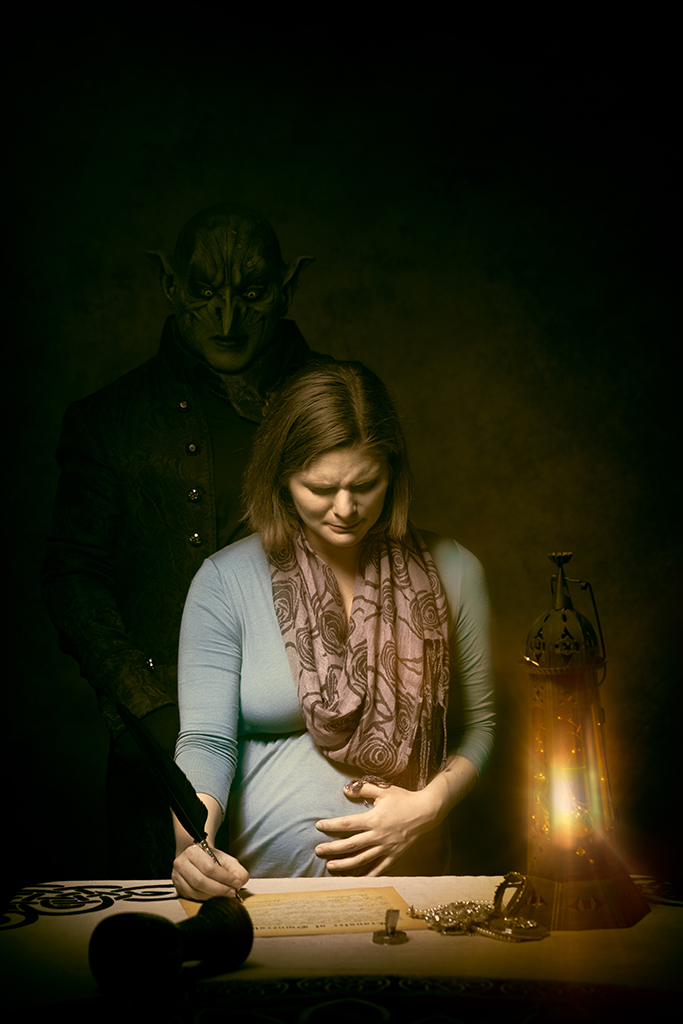
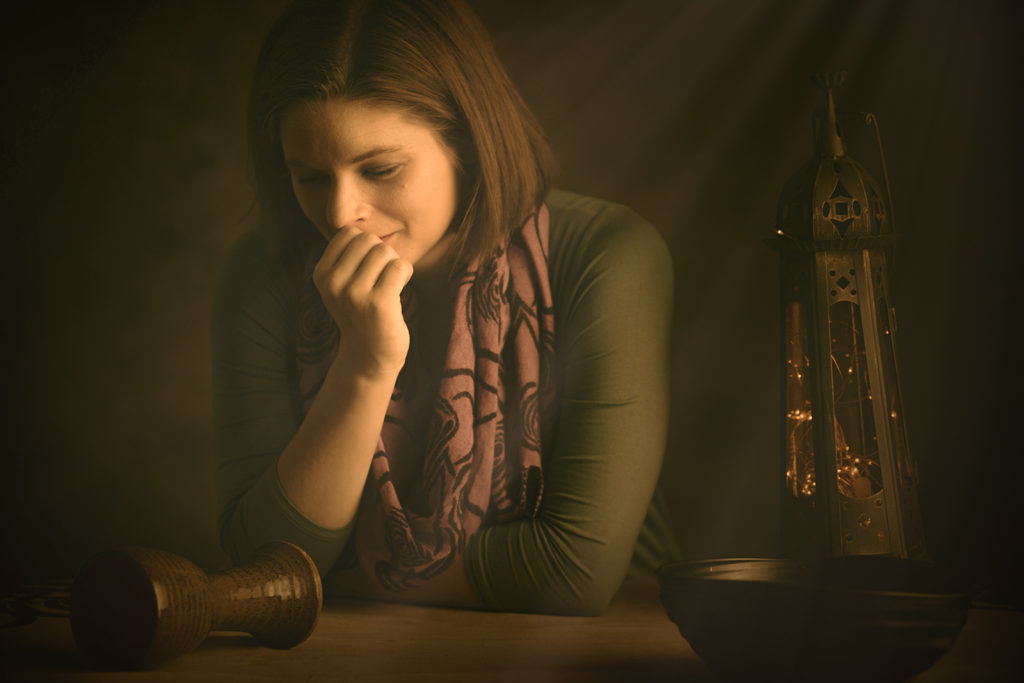

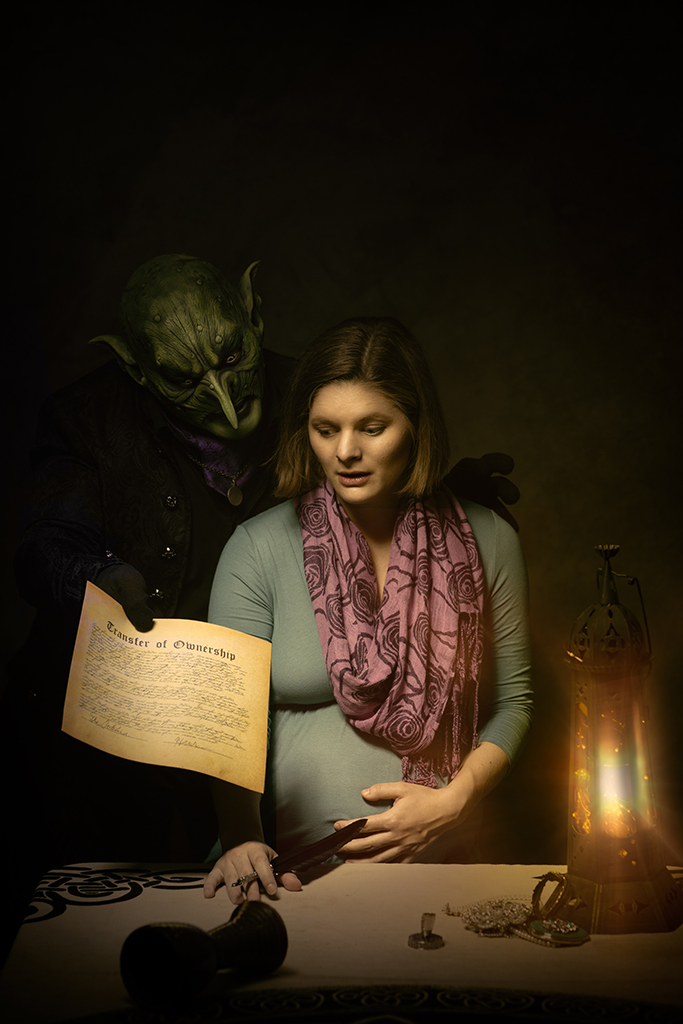
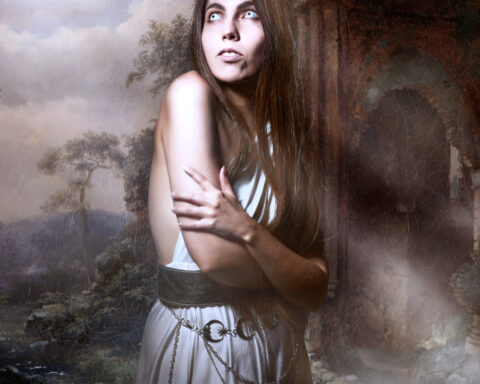
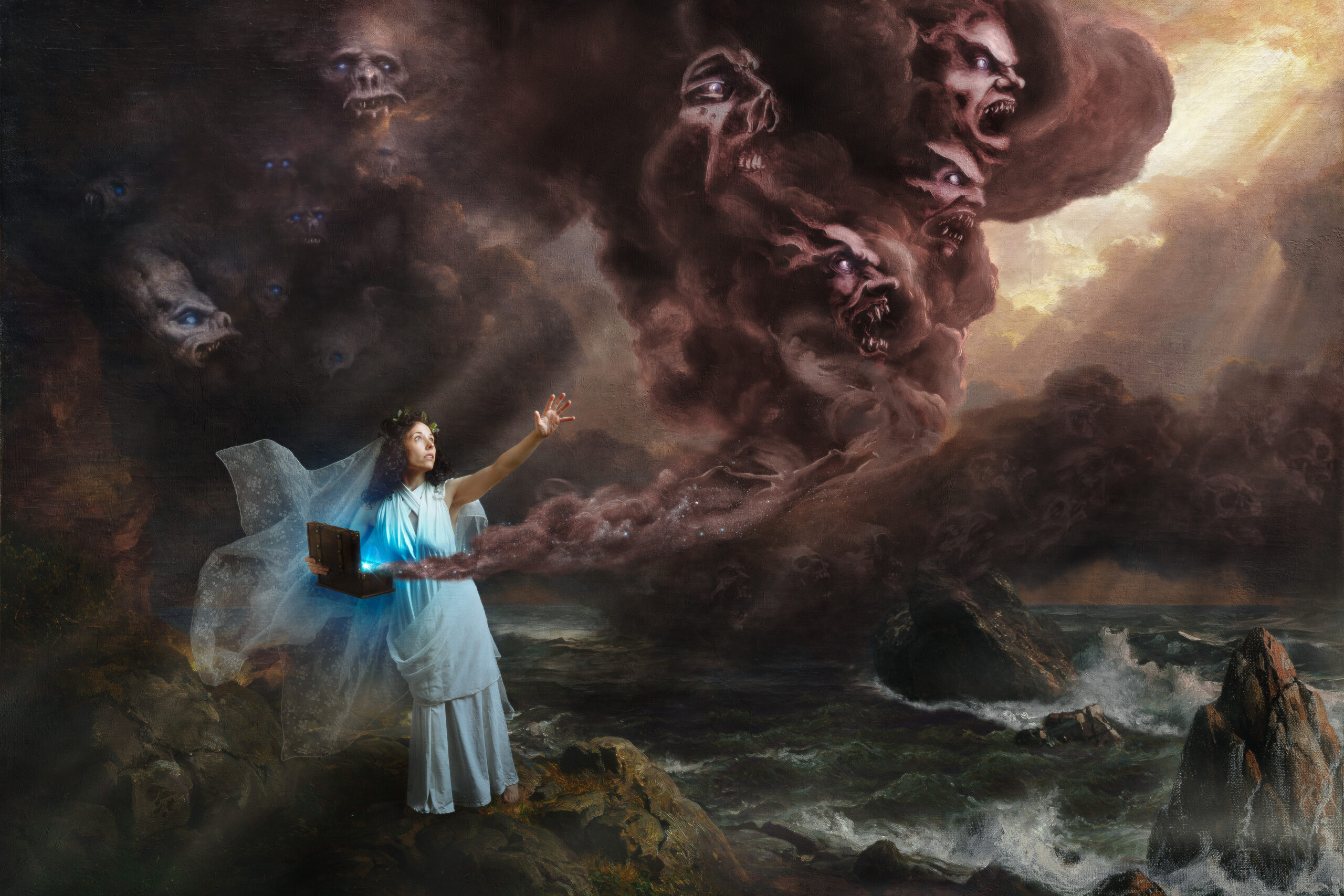
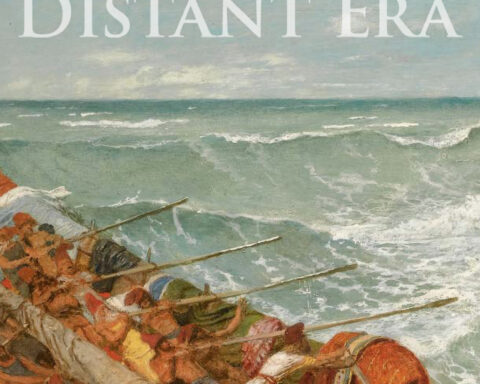
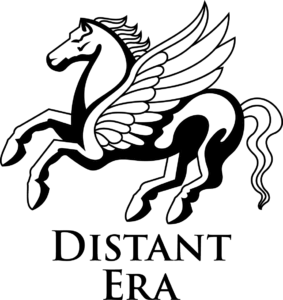
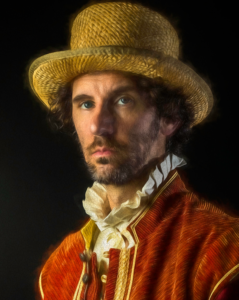
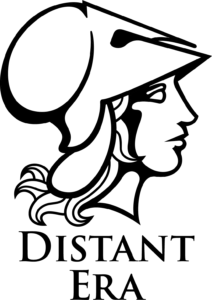
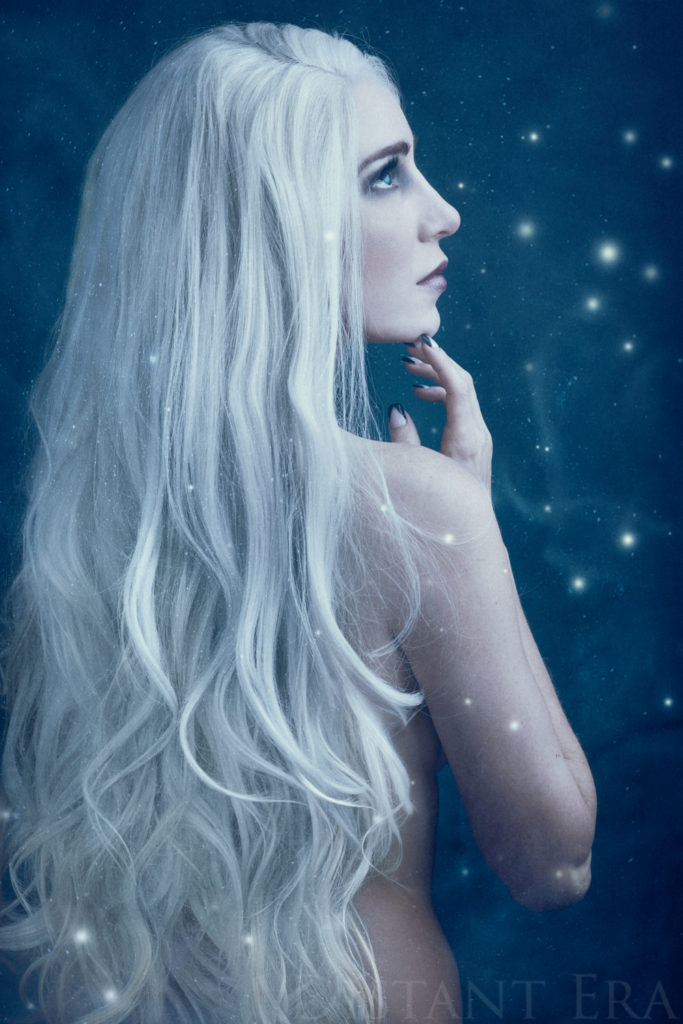
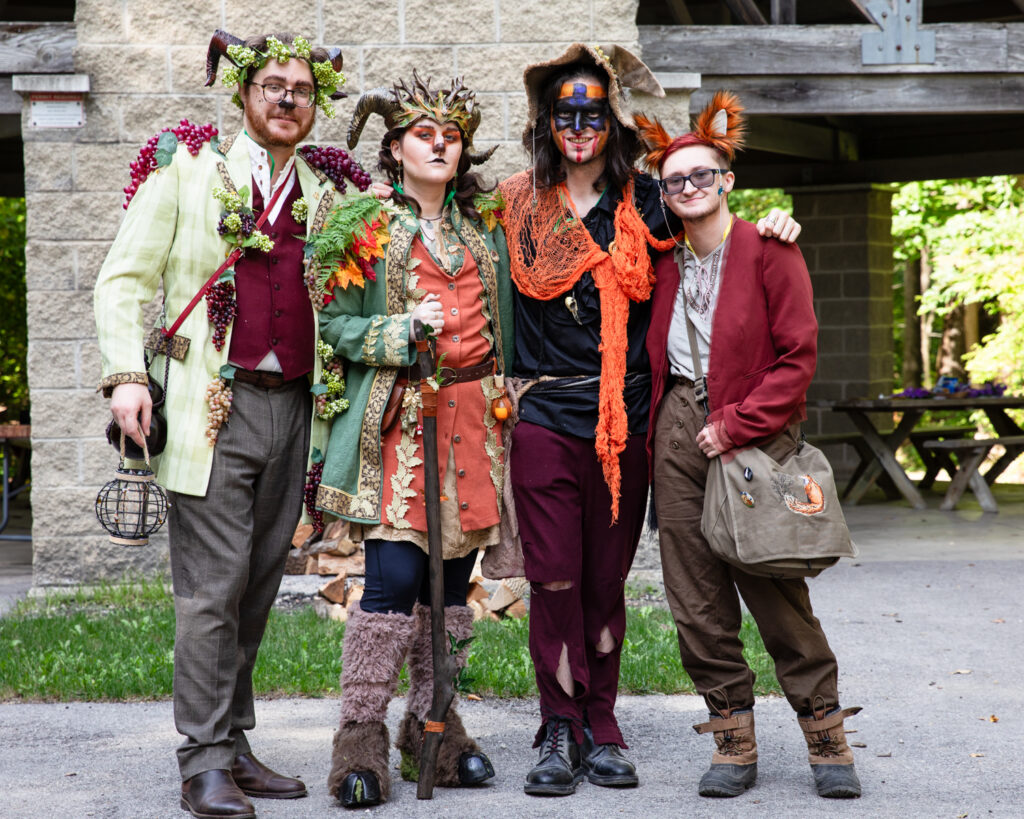
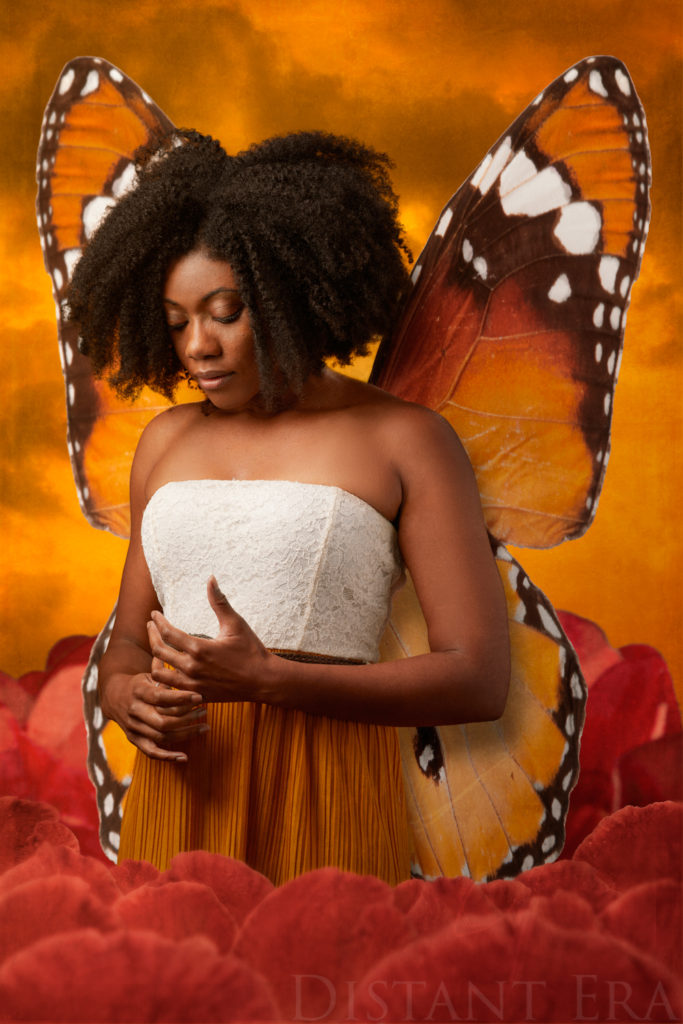
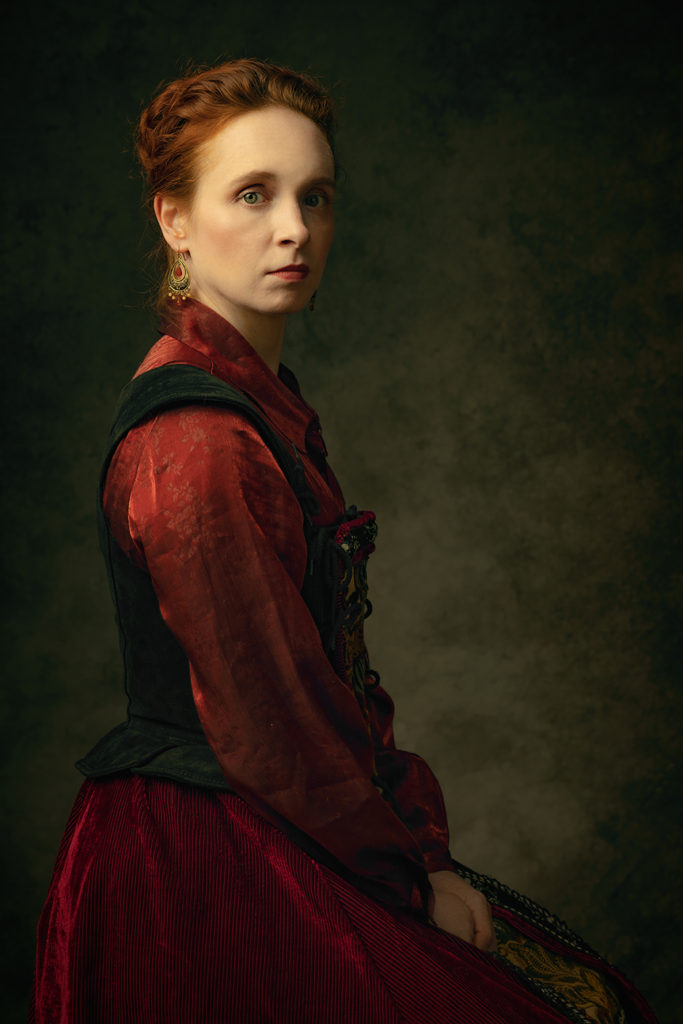
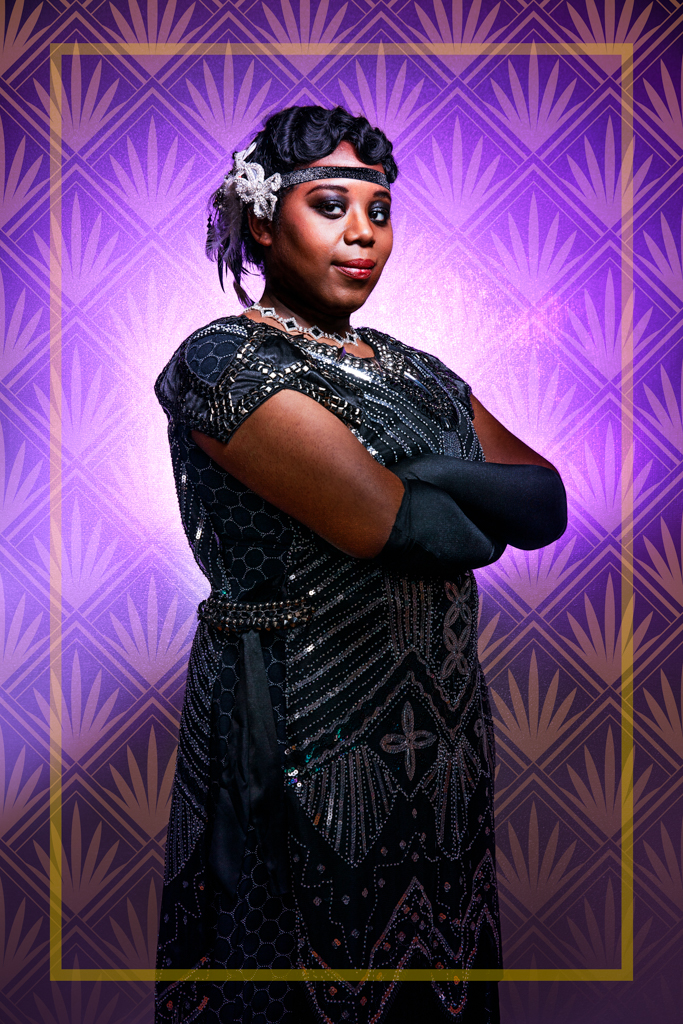
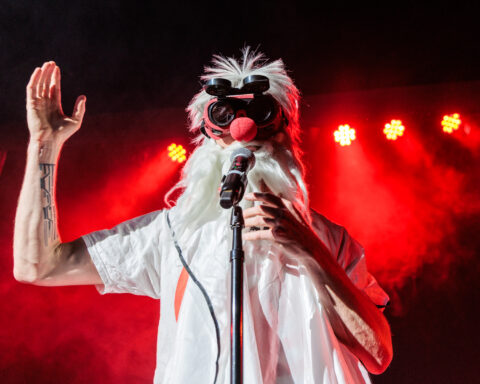
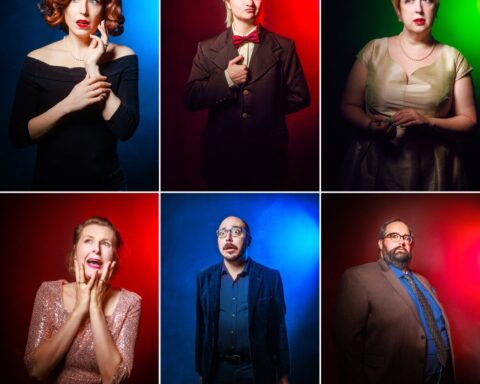
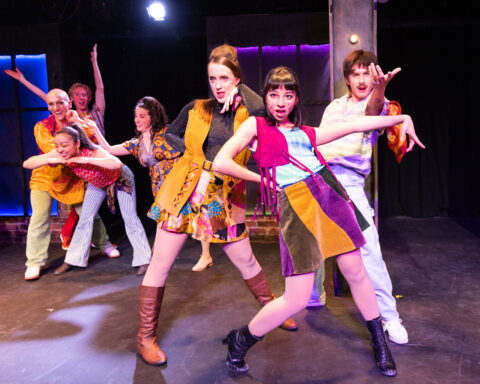

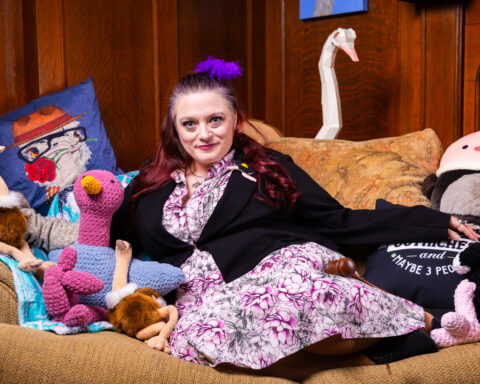
Follow Me